- Pilot cargo in October 2025 aims to diversify sources, improve yields, and support trade talks.
- Diplomatic communication with Saudi Arabia is key to framing US crude as a supplement, not shift.
Deciding whether Pakistan should import crude oil from the United States depends on multiple strategic, economic, and diplomatic factors. Here’s a balanced assessment based on the latest data and projections:
Pakistan is slated to take delivery of its first-ever US crude oil, one million barrel cargo of light WTI crude from Vitol, expected to arrive in October 2025 at Cnergyico’s refinery in Karachi. This marks a pilot spot cargo — if successful, Cnergyico may import one cargo per month thereafter
The move is part of a broader US–Pakistan trade agreement focused on oil and energy cooperation, and to mitigate threatened 29% tariffs on Pakistani exports.
Advantages of US Crude Imports
Energy source diversification
Breaking reliance on Middle Eastern suppliers — Saudi Arabia and UAE) — who currently account for nearly all of Pakistan’s crude oil imports — enhances energy security and geopolitical flexibility.
Refinery compatibility
Pakistan’s largest refinery can process WTI Midland and cactus grades without blending adjustments and may boost gasoline/middle distillate production, easing import reliance on refined products.
Trade diplomacy tool
Importing US crude may be used strategically in tariff negotiation, potentially lowering or avoiding the 29% US duty on Pakistani exports by helping balance trade flows.
Challenges and Risks
Higher logistics cost
Freight, insurance, and handling add around US$3 per barrel compared to regional supplies. This higher cost may strain forex reserves unless oil price spreads narrow.
Foreign exchange pressure and inflation
Larger import bill could put pressure on currency reserves and stoke inflation, especially if fuel prices are subsidized domestically.
Limited climate if not managed well
US imports should be a strategic supplement rather than a primary sourcing route, since over-dependence on long-distance crude can worsen trade and fiscal balances.
Key Considerations
| Factor | Rationale |
|---|---|
| Volume | Target of 10% of total crude imports, around US$ one billion annually |
| Pricing Arbitrage | WTI’s lighter quality and higher gasoline yield might offset additional logistics cost, assuming favourable price spreads |
| Refinery Capacity | Cnergyico’s SPM-equipped 156,000 bpd plant is record-compatible; no major technical hurdles noted |
| Strategic Diplomacy | The imports offer Pakistan leverage in US tariff negotiations and broader market access |
The logical reply is that as part of a broader strategy Pakistan should import US crude oil. Use it to boost export negotiation leverage with the US. Diversify sources to improve energy resilience. Leverage light US crude to enhance domestic fuel yields.
Tread carefully
Limiting imports to a test/ pilot phase to assess cost, logistics, and yield economics. Monitoring global price differentials — if WTI premiums shrink relative to Gulf crude, US imports may become more viable long-term. Avoiding over reliance — continue importing most crude from Gulf suppliers with more favorable logistics and financing terms.
Moral of the story
Pakistan is entering a strategic test phase, set to receive one million barrels of US WTI oil in October 2025. If successful, limited monthly imports (10%) can support export negotiations, diversify supply, and potentially improve gasoline yields — even at some added logistical cost. However, unless price arbitrage improves, US crude should remain a tactical supplement, not replace traditional Gulf suppliers.
Likely Saudi Reaction
Importing US crude oil may please US President Donald Trump, but it could also annoy Saudi Arabia, especially given the special relationship between Pakistan and the Kingdom, which includes:
Long standing energy ties
Saudi Arabia is Pakistan’s largest crude oil supplier, often providing oil on deferred payment (US$3 billion oil credit facility renewed multiple times).
Financial assistance
Saudi Arabia has provided billions in loans, deposits, and grants to support Pakistan’s economy, particularly during IMF negotiations.
Strategic alignment
The Saudi-Pakistan relationship is not just economic but also political and military, including defense cooperation and labor remittances.
Though, to begin with import of crude oil from United will be small, the move could strain ties between Pakistan and Saudi Arabia.
Geopolitical optics
Importing US crude might be seen as Pakistan pivoting westward, especially if framed as part of a larger US trade deal.
Loss of market share
Even a 10% reduction in demand from a long-time buyer like Pakistan might raise commercial and symbolic concerns.
Trust and alignment issues
If the decision isn’t communicated diplomatically, Riyadh may perceive it as ungrateful, especially if deferred payment oil continues.
Not necessarily a rupture
Scale is limited
Pakistan is not replacing Saudi oil. The pilot phase is just 10% of imports. It’s a diversification move, not a shift in allegiance.
Economic logic
The US crude provides lighter grades and higher gasoline yield, improving domestic refining output. If positioned as a technical decision, it’s easier to justify.
Diplomatic communication
Pakistan can explain this as part of energy diversification — a common practice by many countries—and reaffirm its strategic ties with Riyadh.
Pakistan should do:
| Step | Why it matters |
|---|---|
| Engage Saudi leadership in advance | Avoid surprises and reassure that US crude is a supplement, not a replacement |
| Reaffirm oil diplomacy | Continue or even expand the deferred payment arrangement with Saudi Arabia |
| Highlight refining needs | Explain that lighter crude grades improve fuel mix, not reduce strategic ties |
| Balance optics | Avoid appearing to pivot entirely toward US or using this purely as a bargaining chip in US trade diplomacy |
Bottom Line
Importing US crude could cause diplomatic unease in Saudi Arabia — especially if it’s perceived as Pakistan drifting from its long-standing partner. But the impact can be minimized through: 1) Transparent diplomacy, 2) Economic rationale, and 3) Strategic reassurance.



